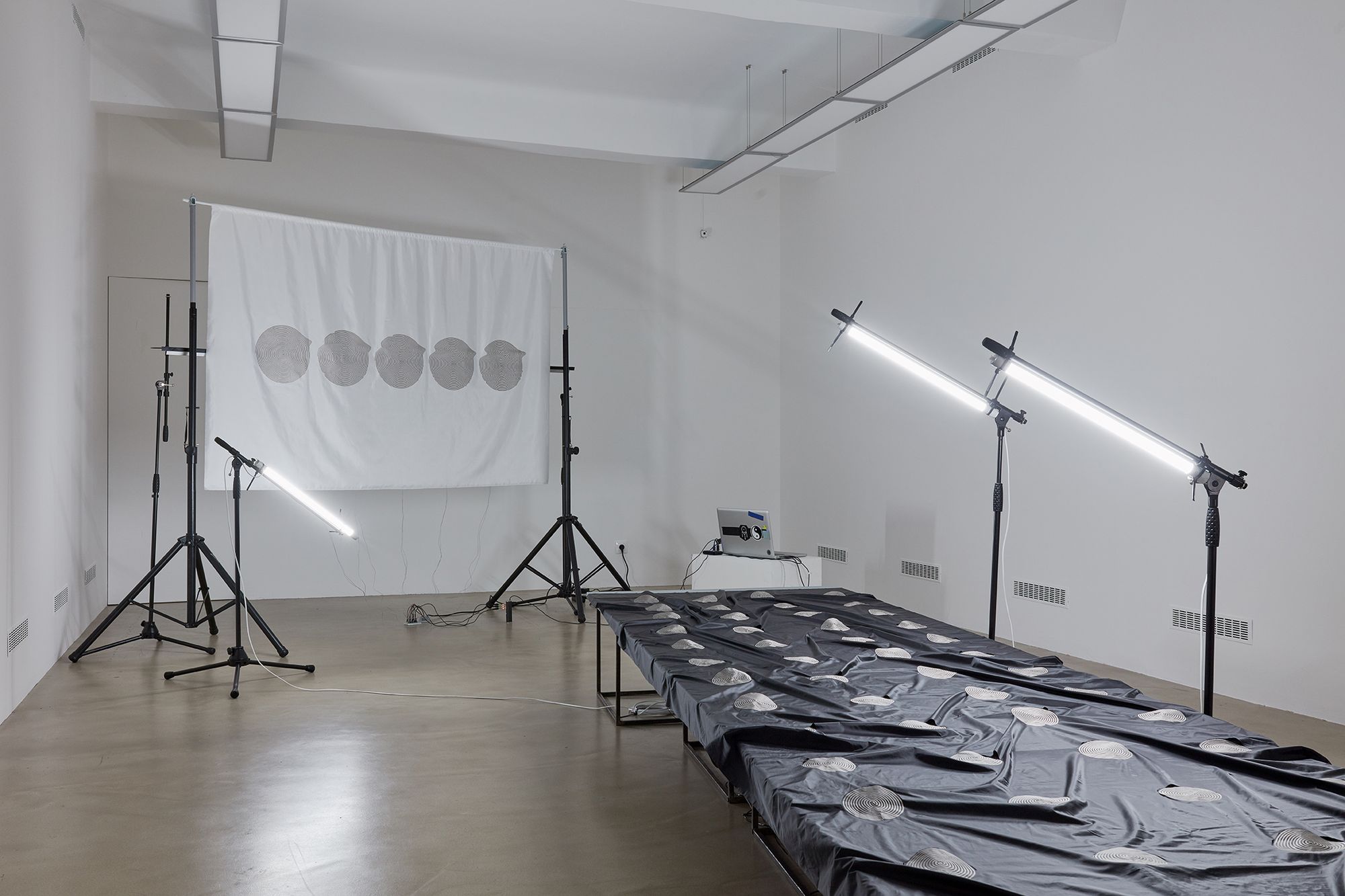Experimental textile, sound effects, morphology and aesthetics combined with contemporary forms. The sound, textile and space is present in the works of Ejtech poly-disciplinary studio as a unified medium. Their creations put experimental interactions and the impacts of perception on individuals in the center. We interviewed textile artist Judit Eszter Kárpáti and media and sound artist Esteban de la Torre about technospiritualism, installations and special collaborations. Interview!
Two different fields meet in your works: Judit researches on the field of interactive textiles, while Esteban is a media artist. Tell us a bit about the beginning; how was Ejtech established and what was your first project together?
Esteban de la Torre: Although we come from quite distinct disciplinary and cultural backgrounds, we met at MOME. While Judit’s MA diploma work was Chromosonic a sound reactive textile display, I was working with live visuals and dabbling with interactive art, but the first time we worked together was at Kitchen Budapest in 2014 under a scholarship we won, focused on building experimental interfaces to explore the intersection between textile and sound and the human body.
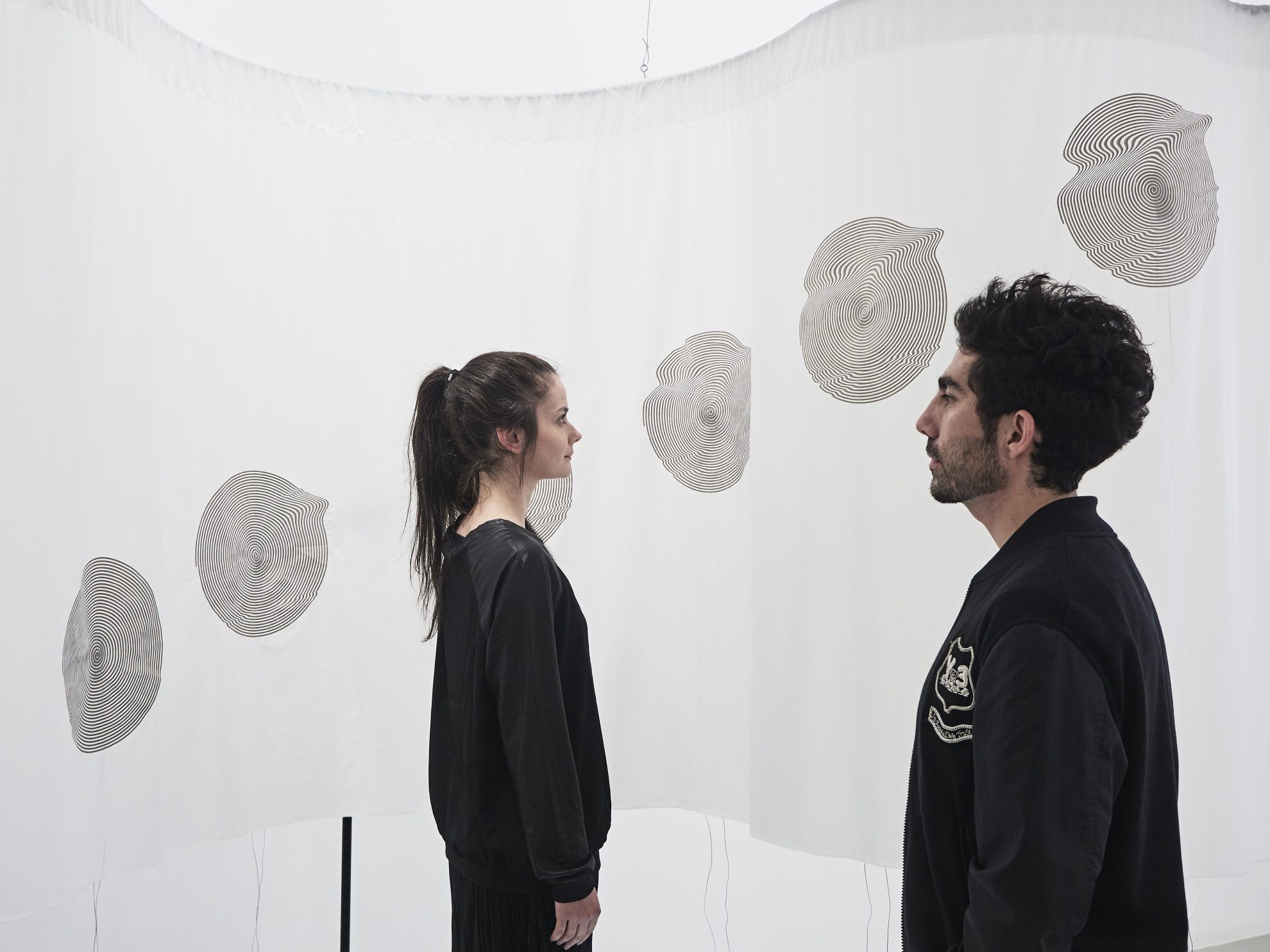
Under the label EJTECH we intertwine and weave an experiential fabric from our overlapping threads of thought, influenced by new materialism and holonic studies, inspired by the occult practices of alchemy and material divination.
Your creations are space-specific and temporary – they come to life at a specific time, when we interact with them and they are to be interpreted in different ways by each individual, in a personal context. What is technospiritualism exactly and what is the basic concept of your installations?
E.T.: As Jay Newman said: „Secular spirituality is a phenomenon that recognizes the link between technology and spirituality, as opposed to viewing technology in competition with spirituality.” [1]
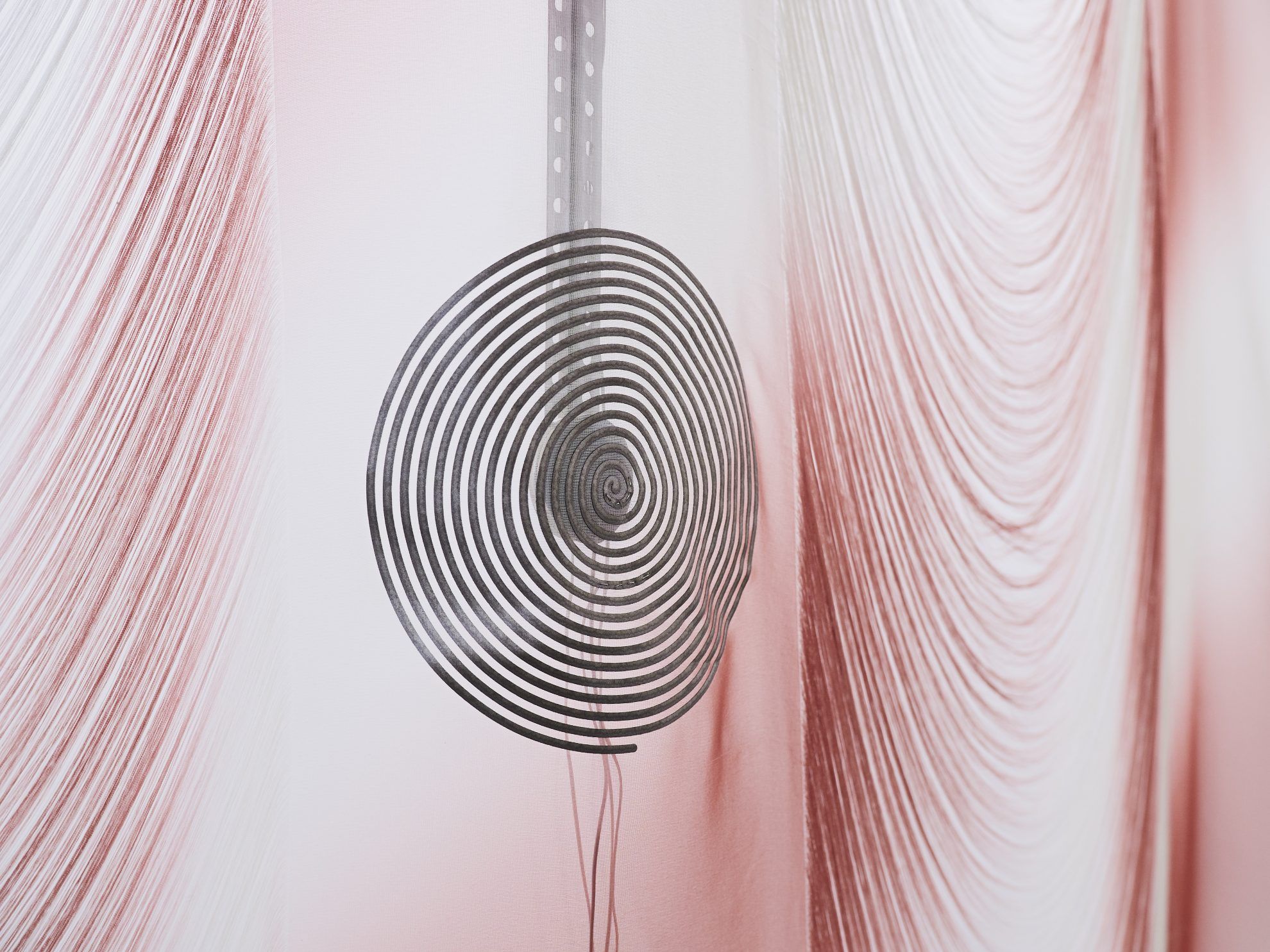
Currently spirituality and the individual’s connection to the “divine”, is limited and moderated by middle men and restricted within a “holy structure”. Religion as a technology has proven to be helpful in organizing populations, securing norms and morals be followed, yet presently, these same sets divide us and completely eradicate our notion of oneness and unity with the universe we exist in. Within our practice we propose technospiritualism as inner engineering using contemporary tools and scientific thought to ease and enhance our assimilation and perception of the infinite now.
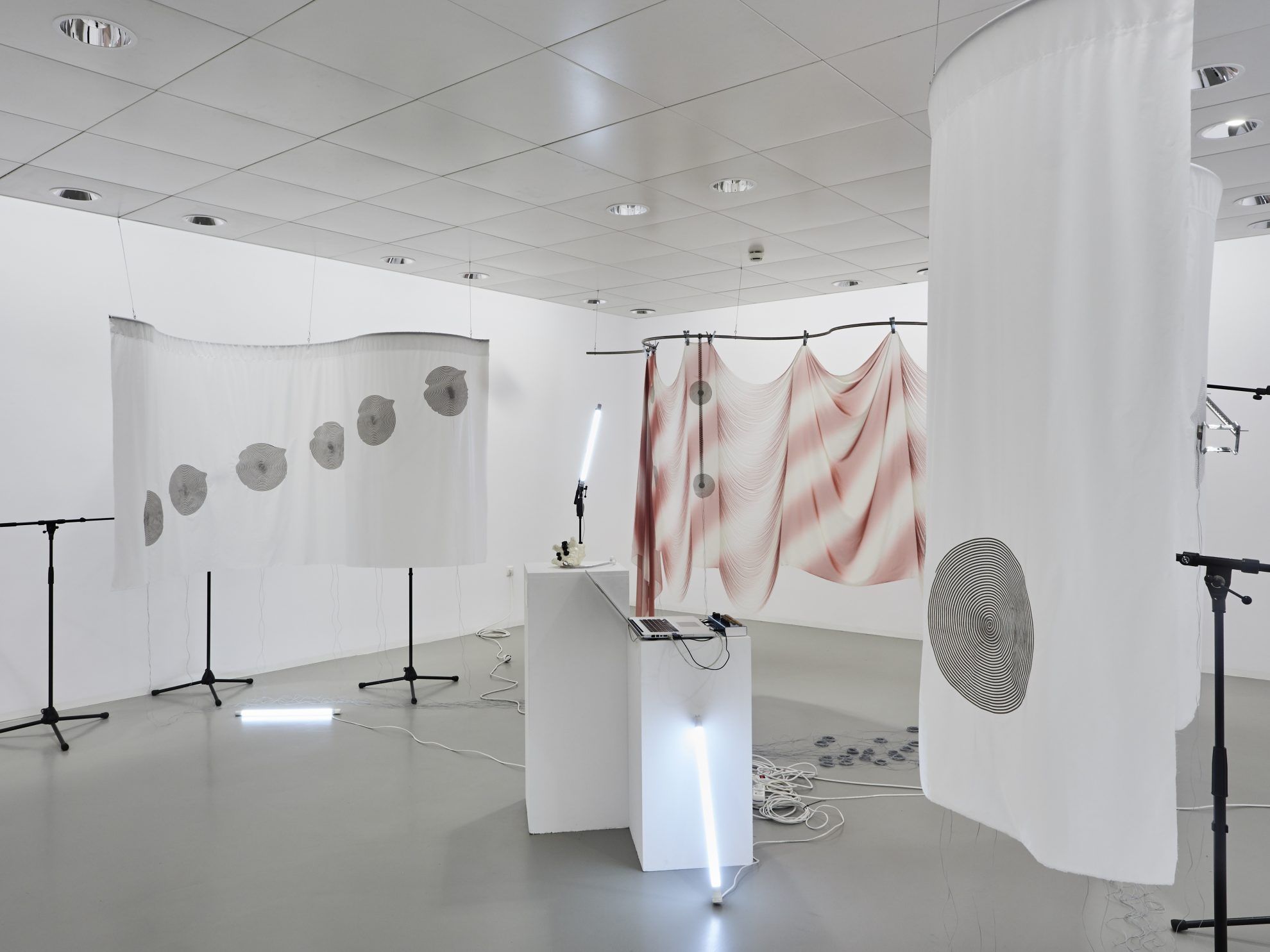
With our installation work, we aim at inciting a process of unfolding into a new perception. SENSORIVM, created for Trafo House of Contemporary Arts curated by Andrea Kovács, for instance, focuses on the intimate tactile experience of exploring sound, and by this, leapfrogging the sense of vision, aiming at the di-hierarchization of the senses. The intuitive, instinctual interaction that occurs when participants’ gestures and touch translate to sound, unburies a forgotten connection to the state of now, an undivided involvement, comparable to that found in the virtuous curiosity of children.
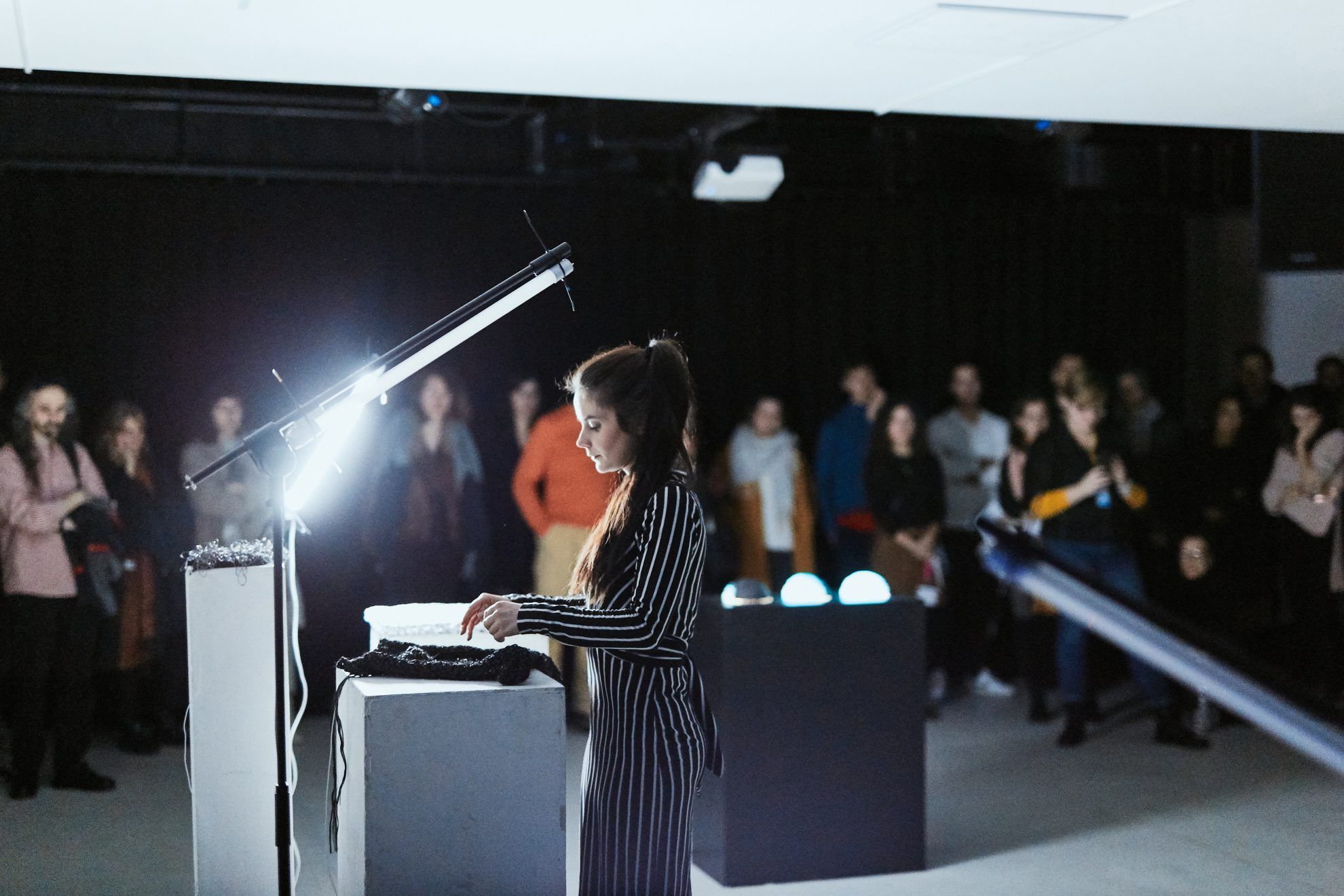
How do you reinterpret the relationship between sound-textile-space and the individual in your works, what approach do you take?
Judit Eszter Kárpáti: Textile works as an amazing mode of knowledge. For example, we use its structure to try and comprehend how the interlinking of everything known creates the fabric of reality.
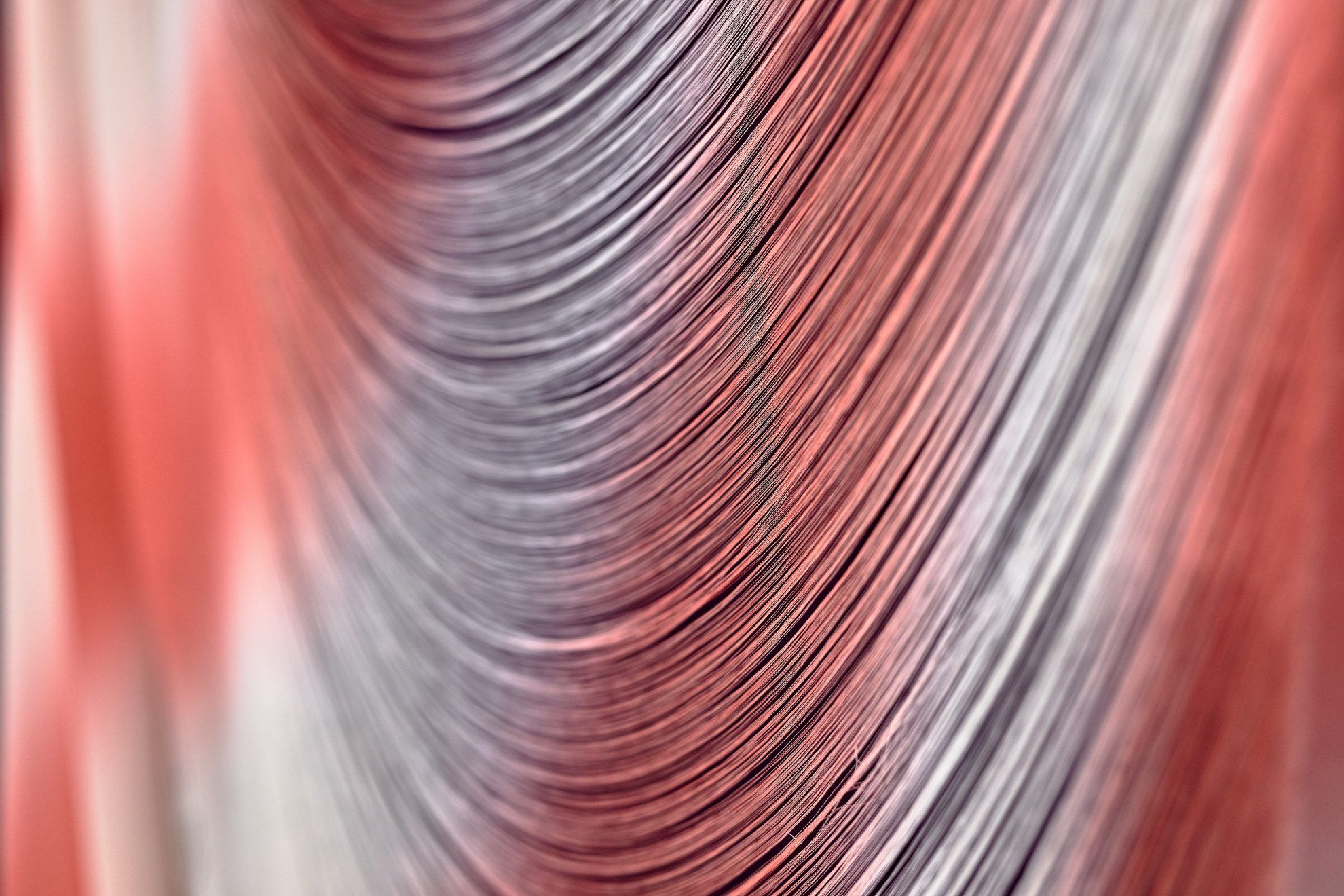
In recent installation works such as All Direction is Curved, All Motion is Spiral presented at Easttopics in 2019, the space, specifically three rooms, are used as central building blocks for the experience. Each room via textiles, vibrates at designated frequencies. These audible frequencies become harmonic or interfere destructively depending on what part of the gallery they are heard from, even which direction the experiencer is looking at.
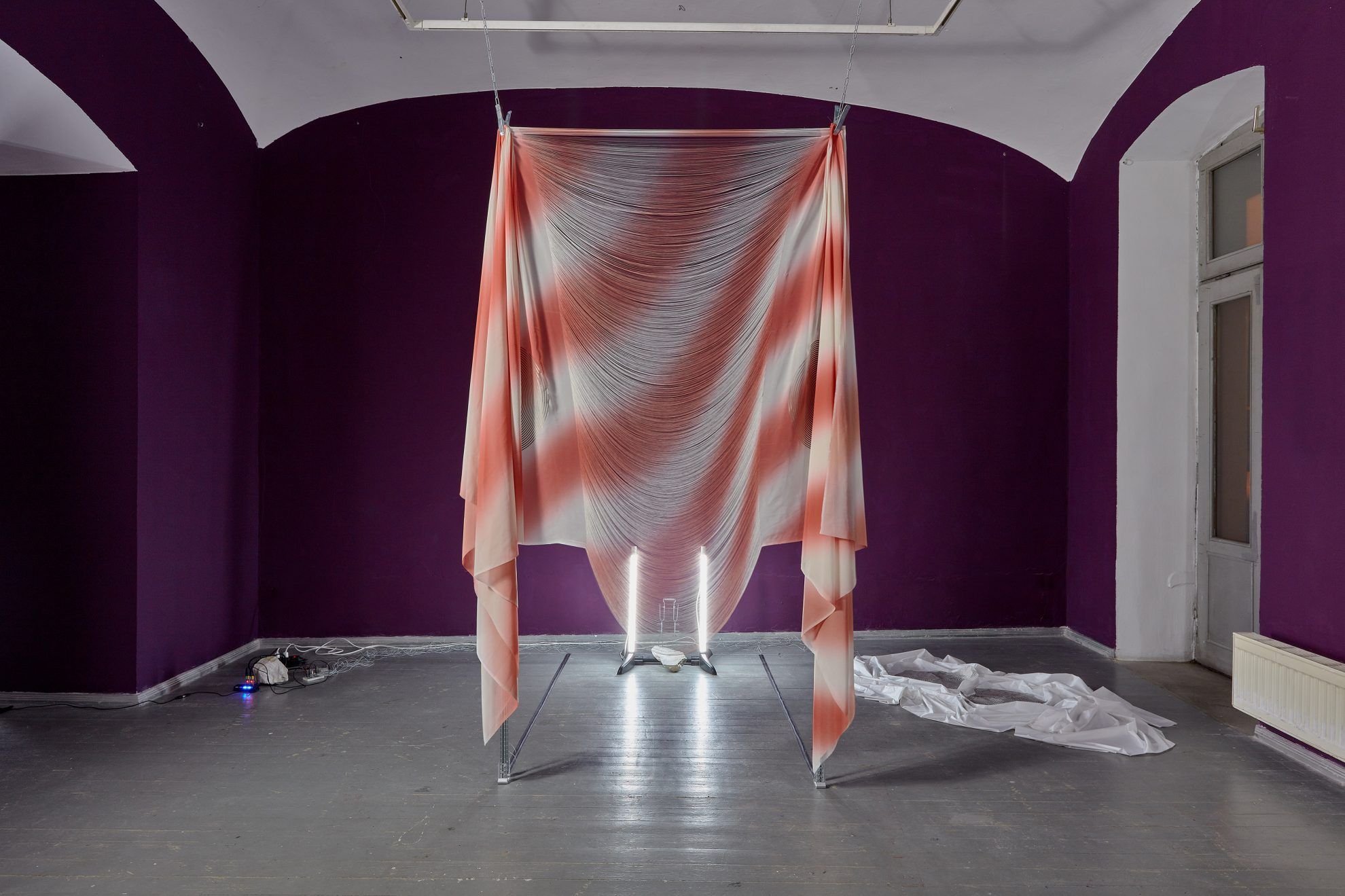
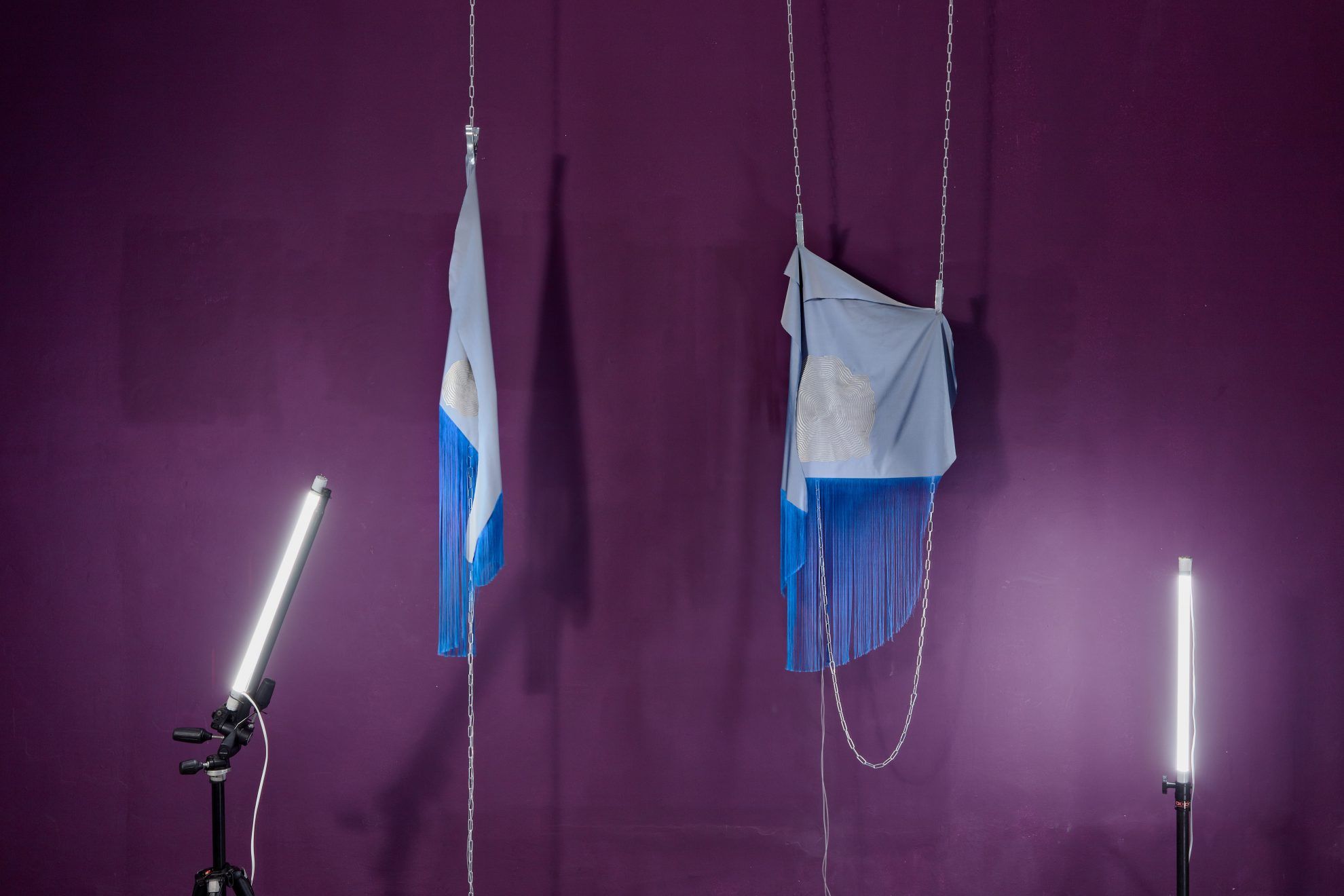
Such subtle differences are possible, as all the sound sources, being the textiles, are placed deliberately throughout the gallery at varying heights and directions. But most importantly, the distinct materiality of each textile speaker is cautiously taken in account. By walking inside the gallery, time is perceptually non existent, as you can physically travel within a sound. As if floating in a pool of perpetual ripples.
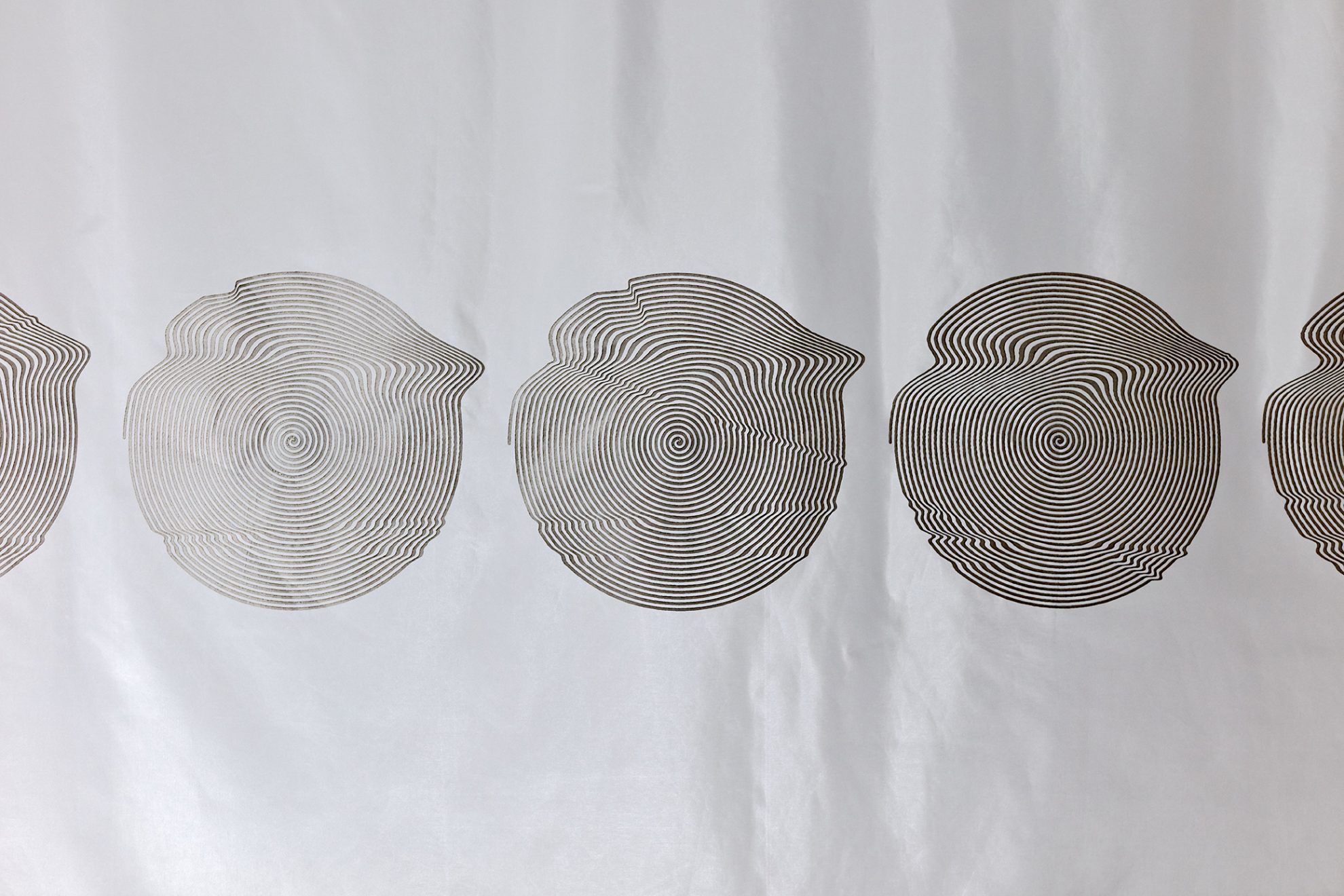
Another example in the usage of sound-textile-space as building blocks, is Phase, In, Phase Out, a 48 + 5 independent multichannel textile sound system presented in Horizont Gallery in 2018 as a performative installation, and an iteration at LOM.Space in Bratislava, as an exploration of the physical force of sound via electromagnetic poems or soundscapes written specifically to fill the space between the ears.
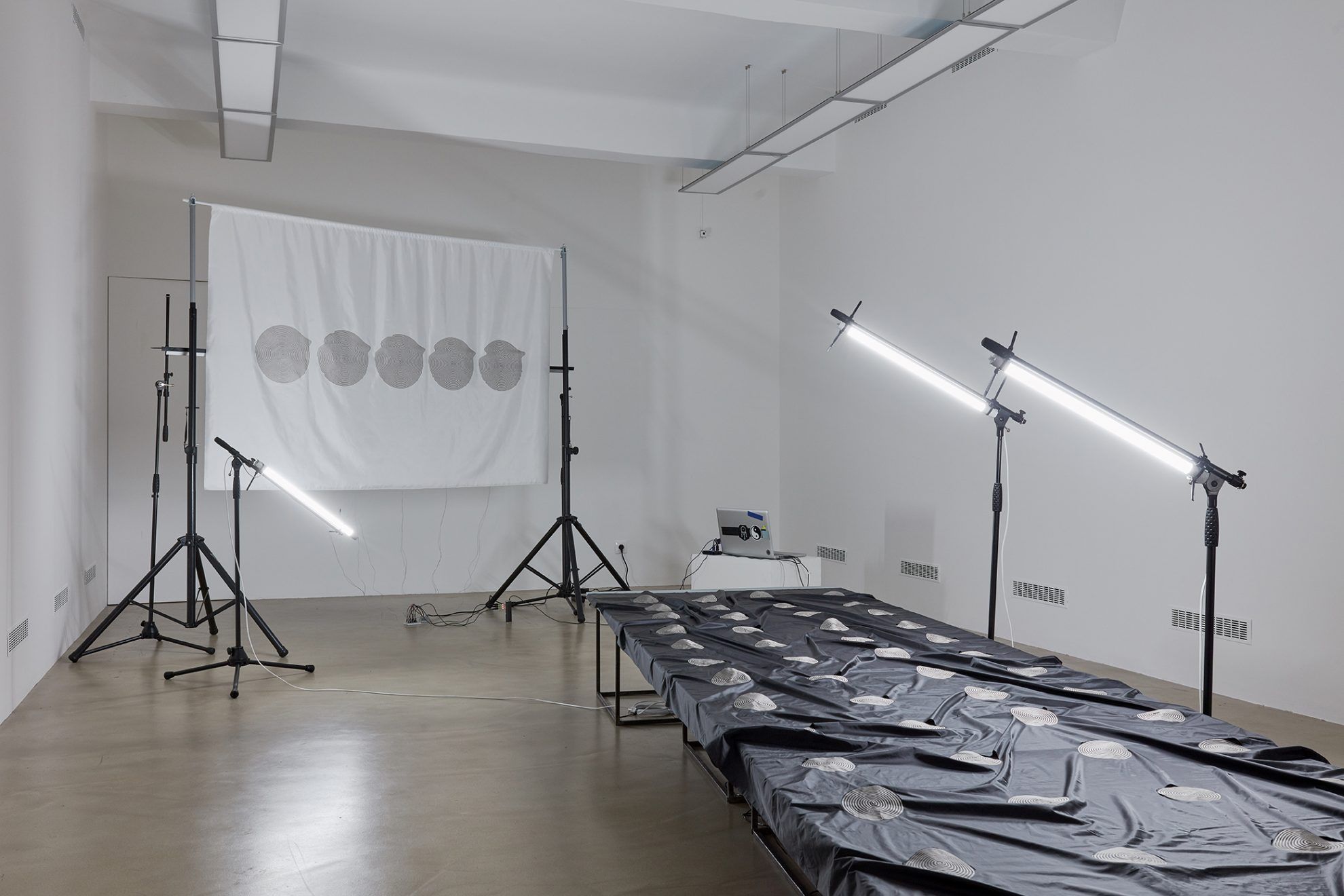
In this work we are interested in audibility, instead of working on merely organizing sound, but setting up the conditions for exploration, such as the experience of corporal hearing.
Your sound and textile based installations have been displayed at several festivals and exhibitions, including Prague, Tel Aviv, New York and Tokyo. Smart textiles and wearable technology are gaining more and more relevance in the world of fashion, too, so you have already collaborated with the Hungarian Perceptual Thinkersbrand or Czech fashion designer Petra Ptackova, for instance. In what context were sound and touch important in these two projects?
J.E.K.: As EJTECH, we are not directly interested in wearable technology, but are very happy and open to collaborations on this amazing topic. With Perceptual Thinkers, the aim was to create a capsule collection, where in a playful way, the wearer could create an entirely private sonic experience by interacting with the augmented jacket.
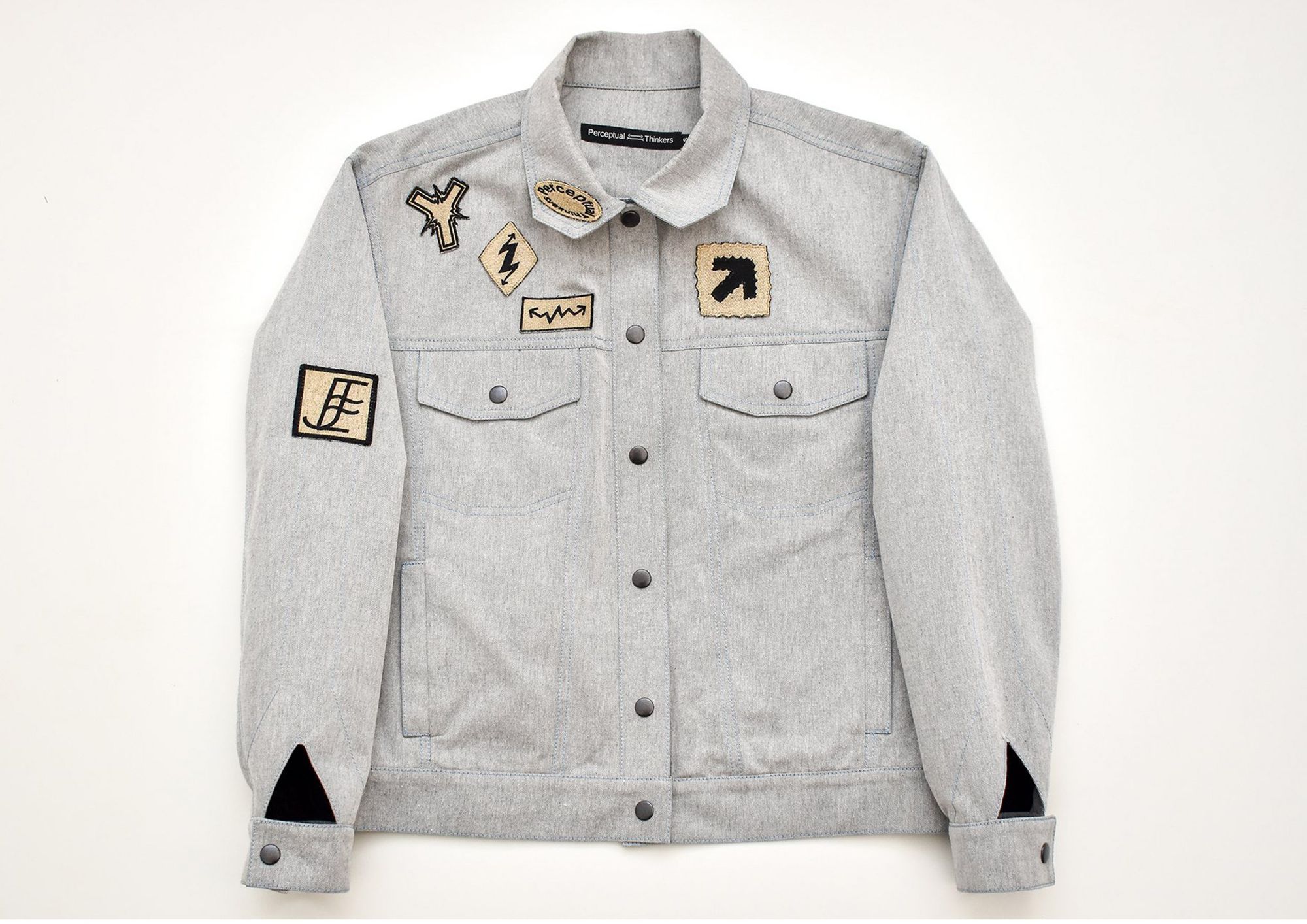
With Petra Ptackova the concept was about inviting the viewer to interact with the person wearing her newest collection. We presented this work at Mercedes-Benz Prague Fashion Week FW19, were the spectators shyly but surely ended up flooding the catwalk touching and examining the knitted jacket worn by the models, filled with messages and icons, creating a dialogue via touch.
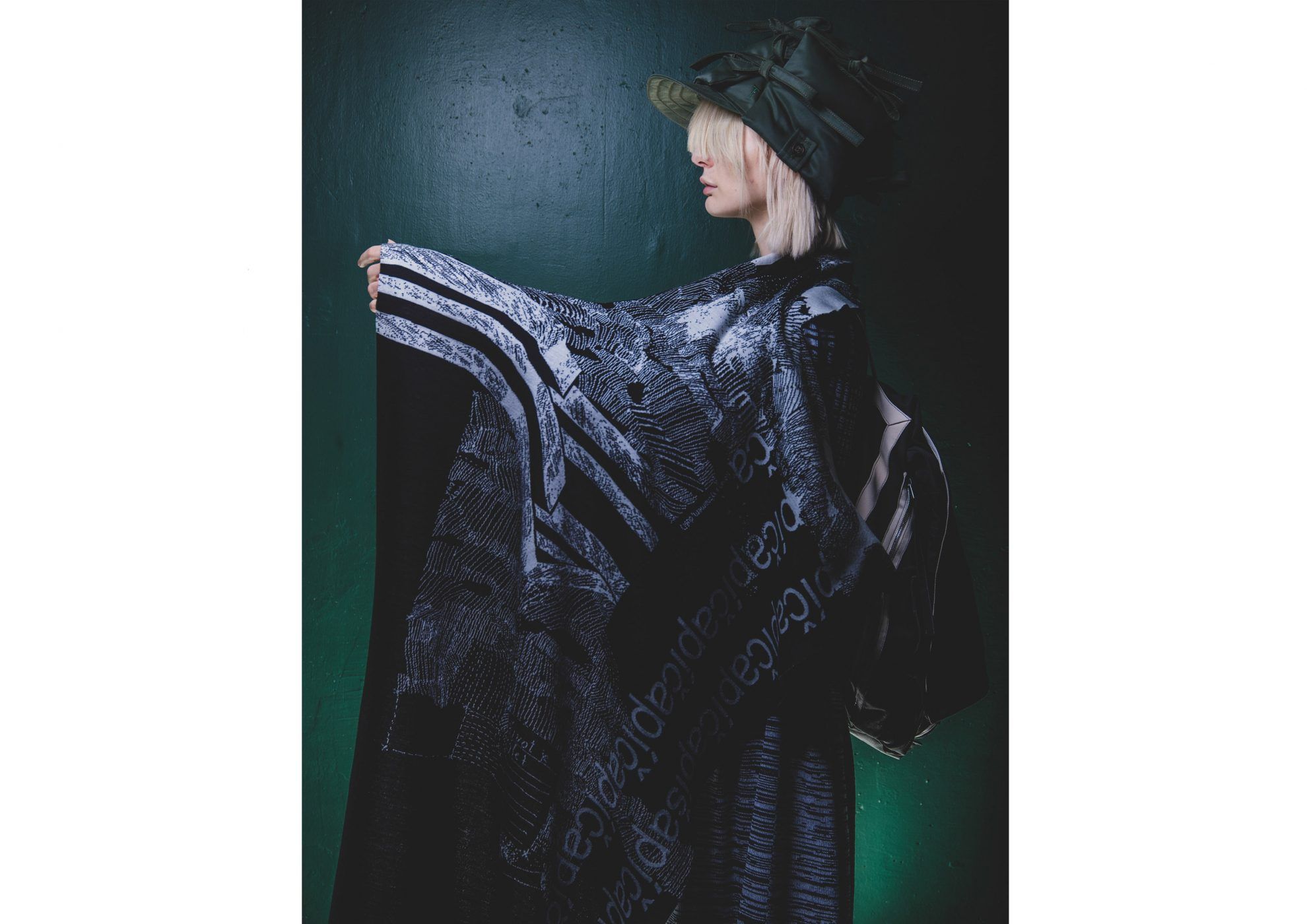
The audience could also see your works in the movie Blade Runner 2049. What was your task here exactly?
E.T.: It was a dream come true to work in Blade Runner 2049. We did the embedded electronics and soft circuitry as specialized props for the costume department. Director Dennis Villenueve and DOP Roger Deakins are both known for their dislike for the contemporary overkill of CGI in the film industry (although the VFX team took the Oscar for their work that year).
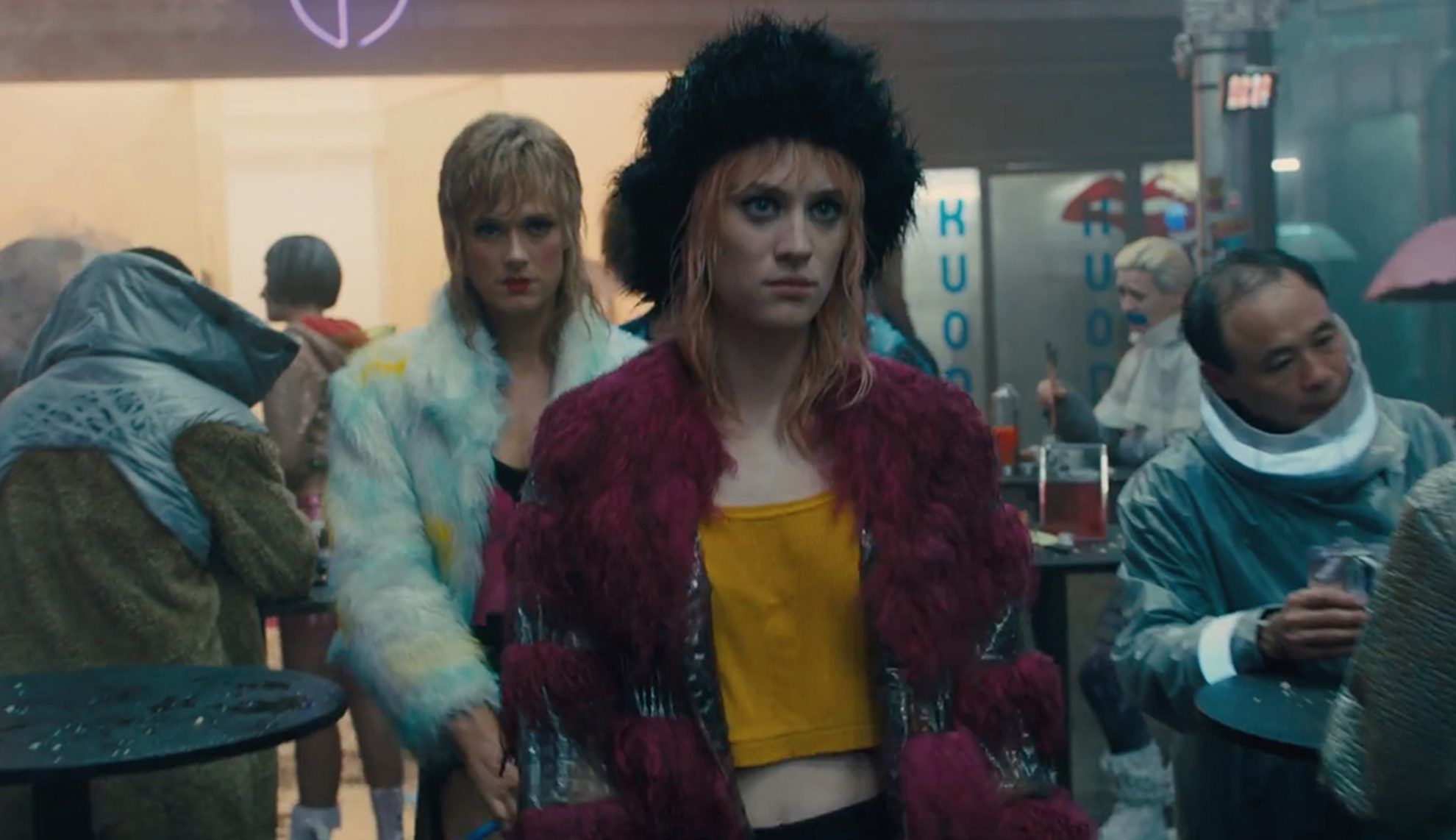
Blade Runner 2049 is set in a not so implausible future, where acid rain and smog cover Los Angeles. During the briefing we were asked to study deep sea creatures and bioluminescence, and bring this to the film onto humans. We were also asked not to use any LEDs whatsoever, as they were not making a Christmas movie. We are happy most of our pieces made the final cut, you can see them at Bibi’s Bar, on the general street public and on the LAPD armor.

Your latest project also debuted recently. What should we know about it?
J.E.K.: We have been working on this dream project for a while, and are crazy honored to have been commissioned by Dior to create an interactive installation for the global release of the legendary AirDior sneakers. The first ever collaboration between Dior and Nike, celebrating the 35th anniversary of the Air Jordans. Alongside with a capsule collection, Mr. Kim Jones, artistic director of Dior Homme, created a new, limited-edition ‘Air Jordan 1 High OG Dior’ silhouette. We augmented these. Dropping worldwide on July 8th.
If you’d like to experience the sound spaces created by Ejtech, you can meet their installations next at Műtő, in the framework of Sandbox festival between September 3 and 5. Check their Facebook event for further info.
Ejtech | Web | Facebook | Instagram
Reference:
[1] Jay Newman (1997), Religion and Technology: A Study in the Philosophy of Culture
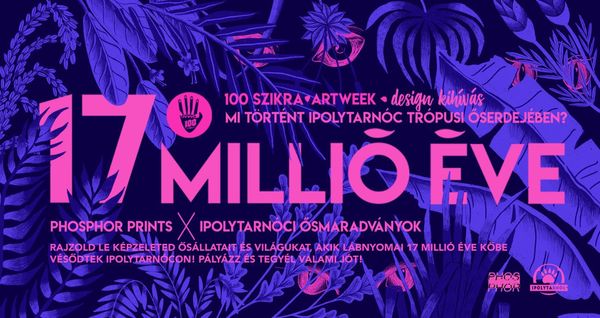
Following the traces burnt into stone | 100 Sparks
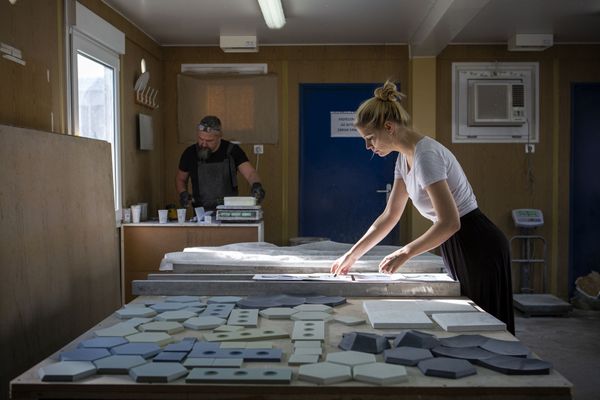
HFDA Spot | Building an online business community










